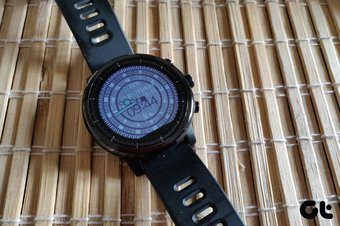Well, that’s what we will find out in this post today as we explore the workings of a smartwatch or a fitness band and see how the numbers come into being. Let’s get started.
How Do Fitness Watches Track Calories
One of the basic factors responsible for calorie tracking by fitness trackers is the heart rate. However, good fitness trackers use complex algorithms and calculations to find the number of calories lost while you are walking, standing, going through your daily life, or working out.
The device then uses the heart rate and other factors like age, height, and gender to calculate the basal metabolic rate. If you remember, you have to enter this information when you register for an account. The Basal Metabolic Rate is the rate at which your body burns energy to keep itself going, like breathing, keeping warm, thinking, and keeping the vital organs going. Apart from that, these devices also come with 3-axis accelerometers and gyroscopes. This sensor tracks your activities, steps, and pace throughout the day. It will then use this and do the math keeping your elevated heart rate into account, especially during exercises and workouts. If you recall, the fitness tracker or smartwatch monitors your heart rate continuously when you start a workout. Hence, it’s always good to remember that the calorie expenditure is always an estimate and never on point.
However, the above math omits a few important factors like muscle mass, hormonal imbalance, rate of metabolism, etc. For instance, the tiny device on your wrist only has your basic data and not full details like muscle mass and fat mass. As you may already know, a person with more muscle will likely burn more energy than someone with more fat mass or no muscle. Secondly, it doesn’t count your metabolic rate. The metabolic rate comes into the picture, especially if you use your fitness tracker to count calories for weight loss. So if you have a slow metabolism, your fitness tracker won’t know how to do that math. Lastly, to conserve the watch’s battery, most of us set the heart-rate monitor to kick in every few hours and not continuously. So if you do small but rigorous workouts in between or an impromptu belly exercise routine, your smartwatch may fail to note the exact numbers. So, this was how fitness trackers and smartwatches calculate and track calories in a gist. The mantra is to remember that the numbers are inaccurate and are just an estimation.
How Do Fitness Watches Track Sleep
Just like the accelerometer and the gyroscope can measure your activity levels, it can also measure your inactivity levels, i.e., the time you sleep. This process is called Actigraphy. This process studies your movements during sleep, the speed of your motion, and the intervals of movements. At the same time, it detects when you are in light sleep, deep sleep, or REM sleep. After that, it gives you a sleep score.
Most trackers make use of PPG (photoplethysmography) sensors for the latter. The PPG sensor is the small LED-like light at the bottom of your smartwatch/tracker. As per the folks at Live Science, the watch or tracker emits light to the tissue on your wrist and studies the reflected light. The hardware on your watch then analyzes the reflected light for SpO2, blood volume, and sleep quality. And the heart rate monitor also contributes to this calculation. The companion app gives you an overall sleep score based on these numbers. The above is true for most smartwatches and fitness trackers. However, things are a little different when it comes to the popular Apple Watch. It analyzes the sleep duration, heart rate, and movements. However, it doesn’t focus much on sleep quality. Instead, Apple focuses more on Wind downtime. But then, it’s a story for another time.
Like calorie tracking, sleep tracking also omits or misses a few factors. For example, the watch many register anything at all if you move around a lot during your afternoon naps. On the other hand, if you lie completely still even after waking up, the odds are that your smartwatch or fitness tracker may still treat it as sleeping. In my case, my Samsung Galaxy Watch 3 would often mistake my laziness in getting up as sleep. So, the same mantra applies here as well—sleep score and sleep analysis are estimates and are not exact numbers.
Stay Fit
You can use additional apps to analyze the data collected by your watch or tracker in detail. For example, Apple Watch doesn’t give a detailed analysis, but apps like Auto Sleep give you a delightful insight into your sleeping habits. Check out Auto Sleep As for seeing the results of your calorie tracking, you can invest in a smart weighing scale to calculate muscle gain or fat loss weekly to see of burning those calories off is working in your favor. The above article may contain affiliate links which help support Guiding Tech. However, it does not affect our editorial integrity. The content remains unbiased and authentic.













![]()